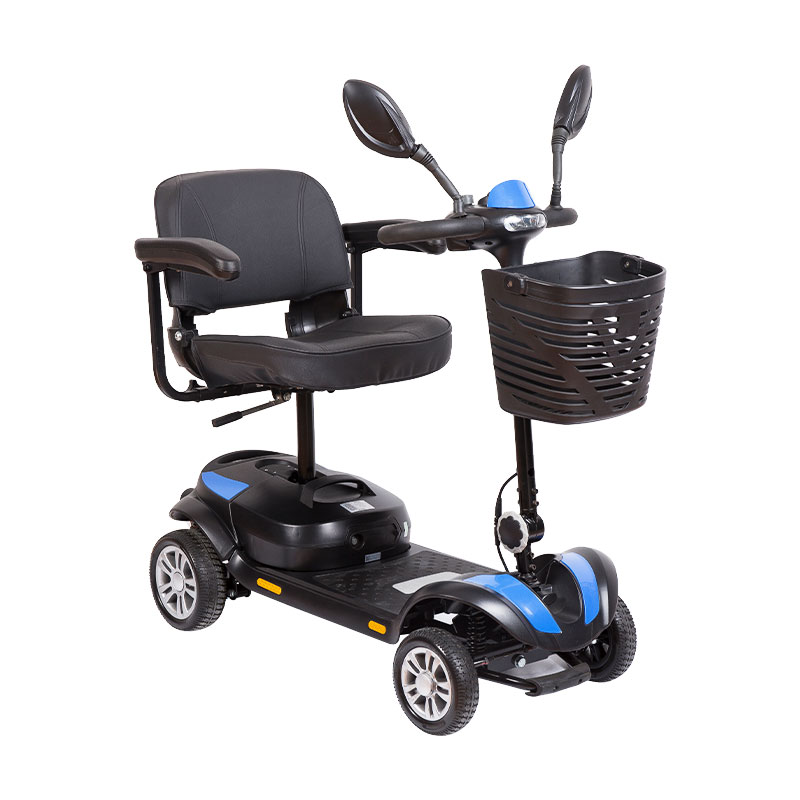How do the handles or straps fit into the design, and do they contribute to the overall portability of the portable electric wheelchair?
The handles or straps integrated into the design of a portable electric wheelchair play a crucial role in enhancing the overall portability of the wheelchair. These features are carefully incorporated to facilitate ease of transportation and contribute to the user's ability to lift, carry, and maneuver the wheelchair in various scenarios.
Ergonomic Design:
The handles or straps are designed with ergonomics in mind, ensuring a comfortable and secure grip for users or caregivers. Ergonomic handles contribute to minimizing strain on the hands and wrists during lifting and carrying.

Placement for Balanced Lifting:
The placement of handles is strategic, promoting balanced lifting of the wheelchair. Well-positioned handles ensure that the weight is distributed evenly, preventing awkward or unbalanced lifting that could strain the user.
Accessibility During Folding:
Handles are often accessible during the folding process, allowing users to grasp them easily as they collapse the wheelchair. This accessibility ensures a smooth transition between the unfolded and folded states without compromising the user's ability to maintain control.
Folded State Considerations:
In the folded state, the handles are designed to align with the compact form of the wheelchair. This consideration ensures that the handles do not protrude or obstruct the folded wheelchair, contributing to a streamlined and space-efficient design.
Multi-Functional Straps:
Straps, when integrated, may serve a multi-functional purpose. They can act as both handles for lifting and as secure straps for holding the folded components together. This dual functionality adds versatility to the design, allowing users to secure the wheelchair efficiently.
Quick and Secure Attachment:
Handles or straps are designed for quick and secure attachment to the wheelchair frame. The attachment points are reinforced to withstand the stresses associated with lifting and carrying, ensuring durability and longevity.
Accessibility for Caregivers:
Handles are positioned to be accessible to caregivers or companions who may assist in transporting the wheelchair. This accessibility is crucial for situations where assistance is required, providing flexibility in the user's support network.
Integration with User-Friendly Controls:
Handles may be integrated with user-friendly controls or mechanisms related to the folding process. This integration ensures that users can seamlessly transition from using the wheelchair to lifting and transporting it without complex steps or adjustments.
Consideration for Users with Limited Strength:
The design of handles or straps takes into consideration users with limited upper body strength. This includes providing ample grip space and ensuring that the handles are easy to grasp, making the wheelchair accessible to a diverse range of users.
Durability and Material Selection:
Handles and straps are constructed with durable materials that can withstand repeated use and lifting. The material selection ensures that the handles remain reliable and resilient over time, contributing to the overall longevity of the wheelchair.
These features collectively enhance the overall portability of the wheelchair, making it a practical and user-friendly mobility solution for individuals with diverse needs.


 English
English Deutsch
Deutsch







-3.jpg?imageView2/2/format/jp2)
.jpg?imageView2/2/format/jp2)






